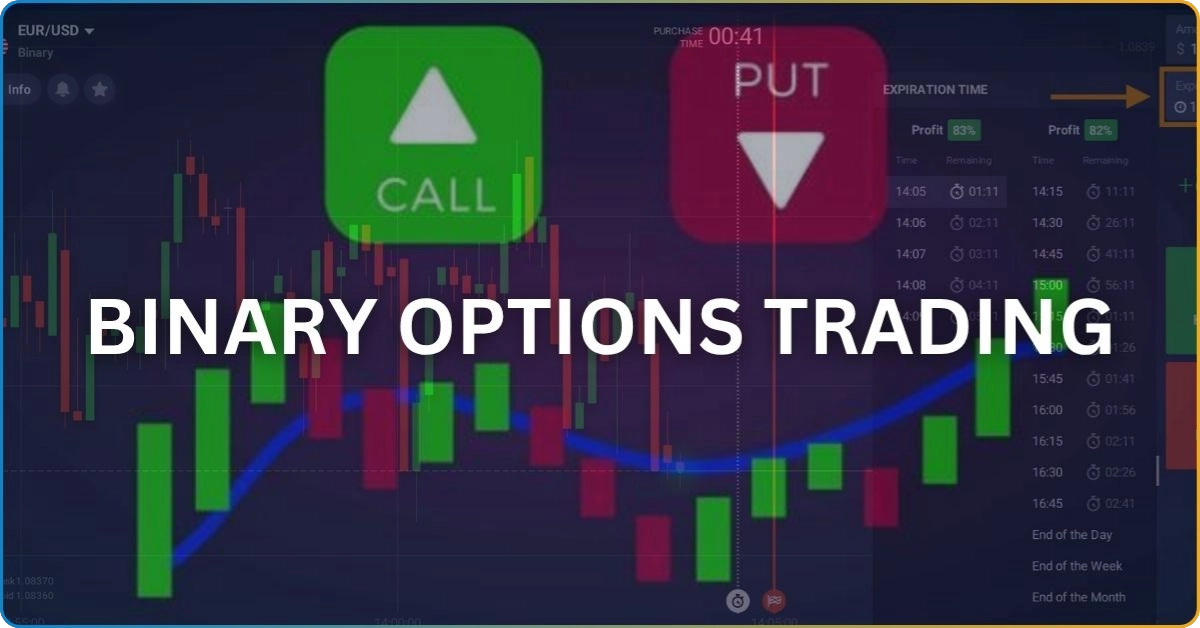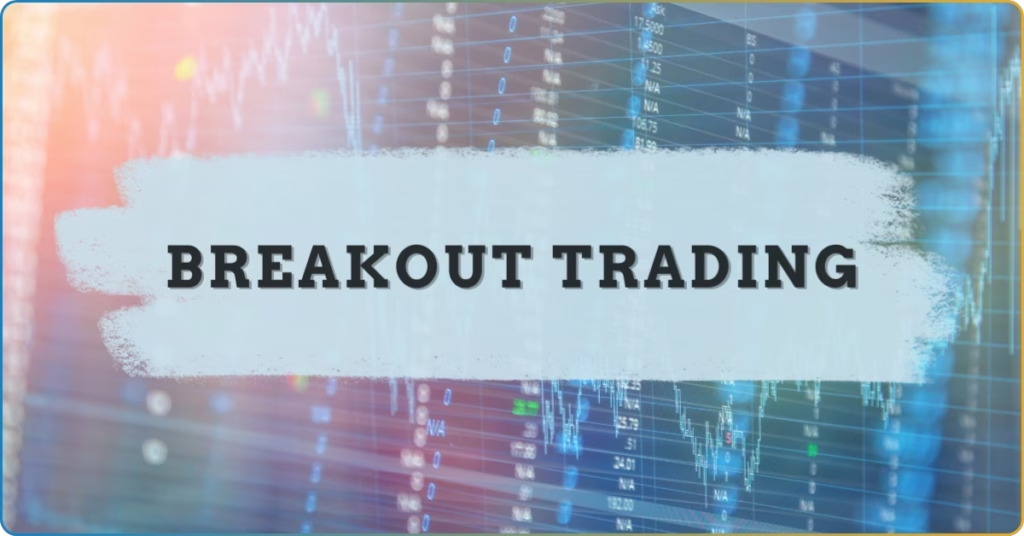Binary option trading offers clearly defined risks and outcomes. They are called ‘binary’ options since there are only two possible outcomes at the end of the trade: either you make a predefined profit, or you lose the money you used to open the trade.
In a way, this makes it easier for a trader to decide whether to trade at a certain time. As a trader, you would know exactly how much you could lose once the markets move against you.
If they don’t, you know exactly how much profit you are potentially making. Although a binary options strategy is controlled, it still makes for an exciting trade.
Overview
- If a trader guesses correctly the value of a binary option at a certain period, they may receive a fixed amount of money. Guessing incorrectly, however, ends in the investor losing the entire investment.
- Among the trading strategies that you can apply for binary option trading are news trading and the Fibonacci retracement strategies.
- The benefits of binary option trading include its simplicity and fixed rewards. Conversely, the dangers of this form of trading include its limited strategic options and the lack of transparency.
What are Binary Options?
A binary option refers to a financial instrument that transforms every trade into a simple yes-or-no question.
With it, traders can decide whether the market is likely to be above a certain price at a specific point in time. If the probabilities are a yes, you buy; otherwise, you sell.
Binary Option Trading Essentials
Expiration Time
Binary options can have various expiration times, depending on the type of option. Traders can set contract duration from several minutes to hours, which is limited by the end of the trading date.
Strike and Expiration Prices
Strike prices are found at the beginning of a contract, while expiration prices are at the end. The difference between these prices determines whether an option matures out-of-the-money or in-the-money.
Call and Put Options
If a trader believes the asset price will increase, they can choose a “call” option. Alternatively, they can select a “put” option if they think the market price will decrease.
Each option comes with a predetermined payout and expiration time, ranging from a few minutes to several hours.
Payout or Refund
If your prediction is correct at the expiration time, you will receive a specific amount, usually ranging from 70% to 90% of the amount invested.
Conversely, if your forecast is wrong, you will lose all or most of the amount you invested in the binary option trading.
How Does Binary Option Trading Work?
“Binary” options trading got its name from the two possible outcomes of the trade: profit or loss.
Binary options are a simplified options contract that resembles online guessing more than a traditional investment. The contract is based on the investor’s prediction of an underlying investment value at a predetermined date.
If the trader’s prediction is correct upon expiration (referred to as “in-the-money”), they receive a fixed payout that usually comprises 60% to 90% of their investment.
If the prediction is incorrect (or “out-of-money”), they lose the initial investment.
Binary Option Trading Example
When you place an order for a binary options trading contract, you are speculating on the market instead of buying a share of the underlying market.
Say now, an investor enters a binary option contract worth $100, which promises to pay investors a 95% return if Company XYZ’s stock increases from its trading price of $20 per share to $25 by a particular date.
Once the prediction happens, the payout is 195% of the contract’s original value, which is $100 + $95. If it doesn’t, the payout is $0 — indicating a complete loss of the original investment.
Binary Option Trading Strategies
Several trading strategies can be effective for binary option trading. Among the popular binary option strategies are the following:
Trend Following
For this strategy, traders identify the direction of the market trend and execute trades in the same direction. They use technical indicators (e.g., moving averages) to verify trends.
Price Action Trading
In this strategy, traders analyze historical price movements to predict future price behavior. They focus on patterns, candlestick formations, and support and resistance levels.
Range Trading
For this binary option trading strategy, traders search for assets that trade within a specific range. They will execute trades based on the expectation that the price could bounce between the established resistance and support levels.
News Trading
This strategy involves executing trades based on significant economic releases or news events. Traders anticipate market volatility and price fluctuations following news announcements and adjust their trades accordingly.
Martingale Strategy
In this approach, traders double the investment amount following a loss, aiming to recover all losses with a single win. Although potentially effective, it has high risks and requires enough capital.
60-Second Strategy
From the name itself, this strategy is used for very short-term trades that usually last only a minute. Traders analyze price movements quickly and make rapid decisions based on market fluctuations.
Fibonacci Retracement
Traders utilize Fibonacci levels to determine potential reversal points in the market. Following a price movement, they search for pullbacks to these levels to place trades in the direction of the prevailing trend.
The Straddle Strategy
For this strategy, traders place both a call and pull option on the same asset with the same expiration time when they expect significant volatility, even though they are unsure of the direction.
The Pinocchio Strategy
This binary option trading strategy involves candlestick patterns, specifically the pin bar. Traders search for strong price reversals indicated by pin bars and place trades accordingly.
Indicators
Traders can utilize different technical indicators, such as the Bollinger Bands or Relative Strength Index, to help identify entry or exit points based on market conditions.
How to Trade Binary Options
Before you get involved in binary options trading, you should do the following steps:
Educate Yourself
Understand the fundamentals of binary options contracts, including key concepts, strategies, and terminology. You can watch videos, read books, or search articles to learn about market analysis and trading strategies.
It’s essential to understand how they work and what determines their payout before you start trading.
Search for a Reputable Broker
Do your research and choose a regulated binary options broker. Only consider brokers with positive reviews, a diverse range of assets to trade, and a user-friendly trading platform.
If you are a trader in the U.S., ensure that the broker is regulated by the Securities and Exchange Commission (SEC). For traders outside the U.S., you should check local regulations and learn which countries ban the practice.
It’s best to avoid platforms that suggest binary options trades are low-risk. Additionally, steer clear of platforms based overseas and offer free “bonus money” to sign up or continue after losses accumulate.
Set Up a Demo Account
Several brokers offer binary option trading accounts where you can practice binary options with virtual money. This way, you’ll have a risk-free way to familiarize yourself with the platform and test your financial strategies without financial risks.
Read more: TradersUnited – Why New Traders Should Demo Trade First
Develop a Trading Strategy
Decide on the markets you want to buy contracts on, the amount you want to put in, expiration times, and the type of binary options to trade.
Develop a trading plan outlining your goals, risk tolerance, and plans for entering and exiting trades.
Start a Live Account
The next step is to open a live binary option trading account. Note that this step requires you to provide personal details, proof of identity, and address.
Once your account is live, deposit funds into your trading account through the available payment method. Brokers typically offer payment methods such as bank transfers or e-wallets. The minimum deposit required to start trading normally varies by broker.
Begin Your Trading
You can now start trading and buying contracts. To lessen risks, begin with small amounts. Keep a close eye on your trades and market conditions and adjust your strategies accordingly.
After doing the basics, follow this step-by-step process for trading binary options:
Select an Instrument
Once you set up your account, you can now choose the currency pair that you want to trade with. The instrument you choose should match your trading strategy and market knowledge.
Among the instruments you can trade are:
- Stock Indices
- Currencies
- Commodities
- Forex
- Events
Decide the Expiration Time
Binary options contracts offer a range of expiration times, from minutes to hours. Select your trade duration based on your trading strategy and market analysis.
Short-term trades can offer quick profits but have increased risk, whereas long-term trades require in-depth analysis and more patience.
Determine the Trade Amount
Decide how much you want to risk on the trade. Manage your capital wisely and do not risk more than what you can afford to lose.
Efficient risk management is essential to achieving long-term success in binary options trading.
Predict the Price Movement
When trading binary options, your main task is to predict whether the asset’s price will rise or fall by the expiration time. You can either place a call or put an option to set your guess.
Execute the Trade
Place your trade on the binary trading platform. You can view the potential payout and the amount you may lose if the trade does not go in your favor. Once you are satisfied with your decision, confirm the trade.
Wait for the Outcome
Once the expiration time comes, you will either receive the fixed payout for a correct forecast or lose the entire amount you invested if the prediction is incorrect.
Pros and Cons of Binary Option Trading
| Advantages | Dangers |
| – Simplicity – Fixed risk and reward – Short-term trading – Variety of assets – No ownership of underlying assets – Accessibility – Potential for high returns – Minimal capital requirement – Variety of trading strategies – Fast execution | – High risk of loss – Lack of regulation – Market volatility – Short timeframes – Limited payouts – Psychological pressure – Misleading marketing – Complexity of market analysis – Limited strategic options – Limited asset choices – Lack of transparency |
BEWARE: Binary Option Trading Scams
Although some binary options are offered on a designated contract market or registered exchange subject to SEC and CFTC oversight, there’s been a surge of Internet-based trading platforms in recent years. A lot of these platforms are completely illegal and unregulated.
Binary option trading attracts scammers since they target unsophisticated investors who have a low entry cost and an easy-to-understand “investment opportunity.”
Fraudulent or illegal binary option issuers and platforms refused to pay out investors’ contracts. They also have either stolen or sold investors’ personal and financial information, including credit card numbers and bank account details.
Some scammers also base their platform on software that benefits them by generating losing trades for investors.
Before you buy, verify the platform’s registration with the following regulators:
- Binary option registration: SEC EDGAR
- Trading platform registration: Securities and Exchange Commission (SEC) or Commodity Futures Trading Commission (CFTC)
- Financial professional licensing: FINRA’s BrokerCheck or Washington State Department of Financial Institutions (1-877-746-4334)
Save Yourself From Scams With CommuniTrade
CommuniTrade is an online community that fosters growth and in-depth knowledge of various trading fundamentals.
With millions of experts worldwide, you’ll garner various insights on different trading areas and form an effective trading strategy that suits your goals and capital.
Protect yourself from scammers with expert-based knowledge at CommuniTrade.
FAQs
Are binary options legal?
Yes, binary options are legal to trade as long as the broker is a regulated provider. Binary options trading in the U.S. is both legal and regulated, has low capital requirements, and is accessible to retail traders.
Look out for CFTC regulation and ensure the exchange is based in the U.S. when you trade your own account.
Are binary options trading risky?
It can be. But here are some steps you can take to secure a safer trade:
- Only trade with a CFTC-regulated broker.
- Do not engage with anyone claiming to be a broker or who claims they can trade your account for you.
- Trade your own account.
Also, try trading binary options on a regulated platform for free. Practice safer options like testing the platform with a binary options demo account.
What is the difference between binary options and vanilla options?
Binary options are risk contracts that are short-term and limited to two possible outcomes at expirations: predefined profit or loss. The payoff is fixed on both sides of the strike price.
Vanilla options, or options, have a payout based on the difference between the price of the underlying asset and the option’s strike price.
Options can be complex and difficult to price. They potentially lead to outsized losses or profits.
Make Informed Decisions in Your Trade
Binary option trading requires a knack for identifying the right time and amount to trade binary options. It’s more than just making baseless predictions. It’s about understanding factors that affect trading, such as market trends and news announcements.
CommuniTrade offers a wide range of educational resources that you can leverage to boost your trading knowledge and skills. Once you become a member, you will also get the best out of a supportive community that offers you expert insights and tips to execute your trades smartly.
Skip the guessing game and trade binary options the right way with CommuniTrade.

















